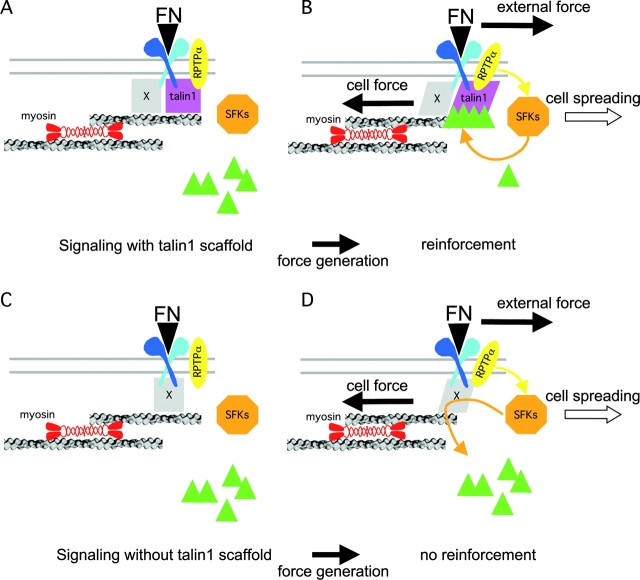Figure 8.
Talin1 acts as a scaffold but does not support the signaling in the reinforcement of integrin–cytoskeleton interactions. (A) FN binding to αvβ3/integrin induces the rapid formation of a weak slipping connection between talin1 and the rearward moving cytoskeleton. (B) Sustained force applied on the FN–integrin–cytoskeleton connection induces αvβ3/integrin-dependent activation of RPTPα/SFKs, which is responsible for paxillin and vinculin (green triangles) recruitment to the talin1/cytoskeletal interface. Assembly of this complex leads to stabilization of the talin1–cytoskeleton connection and is responsible for focal complex initiation and stabilization. (C) In the absence of talin1, protein X is envisaged to support the delayed interaction of integrins with the actin cytoskeleton. (D) Protein X supports the force-induced activation of RPTPα/SFKs, but this does not result in efficient recruitment of paxillin and vinculin, and this precludes reinforcement of the initial linkage. The interaction of integrins with the actin cytoskeleton is not stabilized and focal complexes fail to form. In either case, RPTPα–SFK pathway activation is involved in stimulation of cell spreading.

